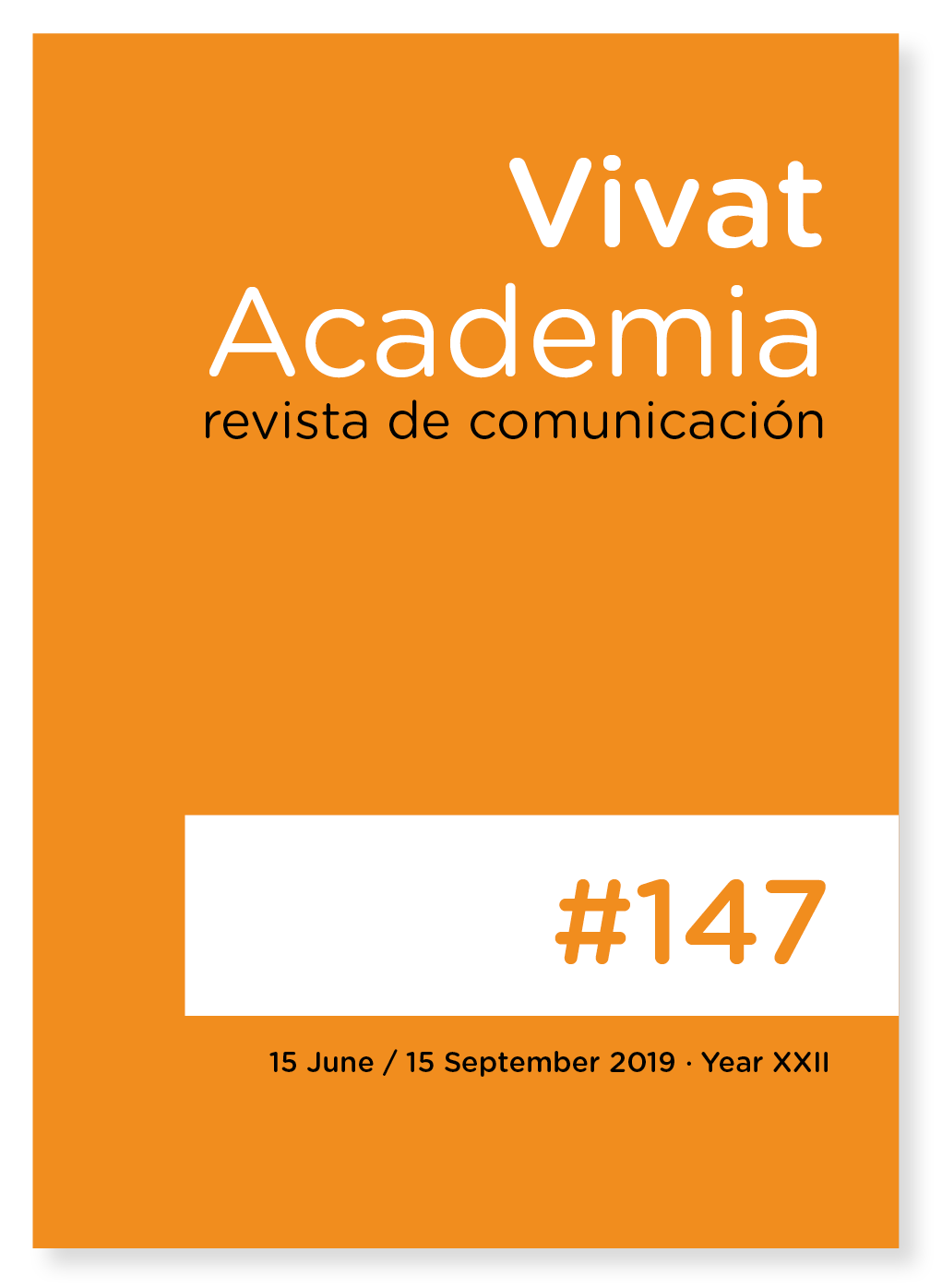Communication strategies in the new economy: the case studies of Wallapop, Westwing and Fotocasa
Main Article Content
Abstract
Communication strategies, especially in the new economy, evolve in an increasingly accelerated way, to adapt to the complex and changing scenario of the interconnected network society.
Based on the hypothesis of the existence of an approach to communication strategy360º, heir to the integrated marketing communication approach, the article describes the communication strategies of three digital brands in Barcelona. The city is headquarters of the Mobile World Congress, with an interconnected ecosistem of startups and digital native brands.
The results of this research come from three case studies (Wallapop, Westwing and Fotocasa), which show that its strategic planning consists of four phases (research, planning, execution and evaluation), coinciding with the Marston RACE model. The communicative strategy observed in these case studies focuses on the short term, with a growth hacker perspective, characteristic of the startup ecosystem, which takes advantage of the synergies between publicity and public relations actions. To carry out these communication actions, the digital native brands seek all the research and measurement tools at their disposal, which allow them to experiment in a controlled way and make decisions based on data, in a process of continuous learning and taking advantage of synergies between coordinated actions.
Downloads
Article Details
The main author must deliver the letter of transfer of copyright, according to the model provided by Vivat Academia, Revista de comunicación, which declares the transfer of copyright to the journal and make explicit the rights of authors regarding the dissemination and use of the manuscript once published.
Creative Commons Attribution/Non Commercial 4.0 International
References
ADECEC (2016). Guía Práctica de la Medición. Recuperado de http://www.adecec.com/pdf/adecec_presenta_la_guia_practica_de_la_medicion.pdf
Atómico (2018). The State of the European Tech Report. Recuperado de https://2018.stateofeuropeantech.com
Braulio, N y Curto, J. (2015). Customer analytics: mejorando la inteligencia del cliente mediante los datos. Barcelona: Editorial UOC.
Castells, M. (2001). La Galaxia Internet. Reflexiones sobre internet, empresa y sociedad. Barcelona: Plaza y Janés.
Ellis, S. (2010). Find a growth hacker for your startup. Startup Marketing. Recuperado de http://www.startup-marketing.com/where-are-all-the-growth-hackers/
Ellis, S., y Brown, M. (2018). El método Hacking Growth: Qué hacen compañias explosivas como Facebook, Airbnb y Walmart para ser líderes en el mercado. Barcelona: Penguin Random House.
Kliatchko, J. (2005). Towards a new definition of integrated marketing communications (IMC). International Journal of Advertising, 24(1), 7-34.
Kotler, P. (2003). Marketing Management. New Jersey: Prentice Hall.
Matilla, K. (2008). Los modelos de planificación estratégica en la teoría de las relaciones públicas. Barcelona: Editorial UOC.
Marquina, J. (2013). Plan social media y community manager. Barcelona: Editorial UOC.
Marston, J. E. (1963). The nature of public relations. New York: McGraw-Hill.
Martí, J. (2010). Funny Marketing. Madrid: Wolters Kluwer.
Meeker, M. (1997). Internet Advertising Report. New York: Harper Collins.
O’Reilly, T (2005) What is Web 2.0. Design patterns and business model for
the next generation of software. O’Reilly. Recuperado de http://www.oreilly.com/pub/a/web2/archive/what-is-web-20.html
Pintado, T., y Sánchez, J. (2009). Imagen corporativa. Influencia en la gestión empresarial. Madrid: ESIC Editorial.
Prensky, M. (2001) Digital Natives, Digital Immigrants. On the Horizon, 9(5), 1-6.
Sánchez Herrera, J. (2012). Nuevas tendencias en comunicación. Madrid: ESIC Editorial.
Schultz, D. E., y Kitchen, P. J. (2000). A response to ‘Theoretical concept or management fashion’. Journal of Advertising Research, 40(5), 17-21.
Schultz, D. E., y Patti, C. H. (2009). The evolution of IMC: IMC in a customer-driven marketplace. Journal of Marketing Communications, 15(2-3).
Xifra, J. (2007). Tècniques de les relacions públiques. Barcelona: Editorial UOC.
Véliz, F. (2006). Cambio de mirada en las organizaciones: comunicación en 360. Revista Lationamericana de Comunicación, 93, 62-65.
Wilcox, D. L; Cameron, G. T; y Xifra, J. (2012). Relaciones Públicas: estrategias y tácticas. Madrid: Pearson Educación.





